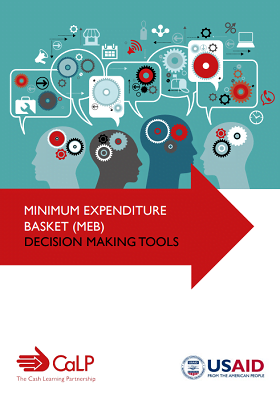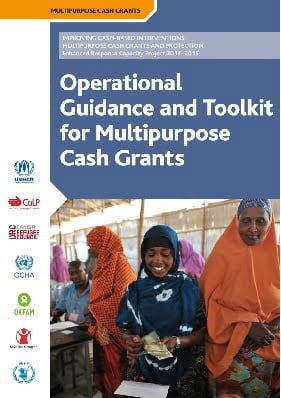Transferencias monetarias multipropósito
Las TMM son transferencias de efectivo sin restricción que las personas afectadas por una crisis pueden utilizar para cubrir sus necesidades básicas. Por su naturaleza, las TMM son la modalidad de asistencia que ofrece a las personas un máximo grado de elección, flexibilidad y dignidad. También existen cada vez más evidencias de que son más costo-eficientes y costo-efectivas para satisfacer múltiples necesidades.
No obstante, las TMM requieren nuevas formas de colaboración entre los actores humanitarios, en todas las etapas del ciclo del programa, así como entre sectores. Si bien existen herramientas sólidas para fomentar la colaboración, éstas no han sido ampliamente adoptadas y las TMM todavía son utilizadas de manera ad hoc. Quedan desafíos por abordar si queremos integrar las TMM en el sistema humanitario con éxito.
Iniciativas relacionadas
Contenido destacado

Minimum Expenditure Basket (MEB) Decision Making Tools
Guidelines and Tools
Update: This publication was revised in 2022. Please read the revised publication here.
The purpose of this tipsheet is to accompany practitioners and decision makers through key stages in the process of calculating an MEB to: (a)
identify what is the most appropriate path to take in relation to their
particular context, identified objective, existing capacities and available
resources; and...

Operational Guidance and Toolkit for Multipurpose Cash Grants
Guidelines and Tools
This operational guidance and toolkit brings together worldwide expertise on cash-based interventions (CBIs). It provides comprehensive and practical guidance for humanitarian actors to assess the feasibility, conceptualise the design and structure the implementation of MPGs. The guidance focuses on MPGs whose primary objective is to meet basic needs as defined by affected people...

Definition of Minimum Expenditure Baskets (MEB) in West Africa
Report
Throughout 2017, five countries in West Africa have worked collectively to define minimum expenditure baskets, in order to better capture the contribution that humanitarian assistance is making to address the basic needs of affected populations, and improve the impact of assistance. This heavy process raises technical and coordination challenges. The CALP Network, with support from USAID /...
Últimos recursos
No se encontraron resultados
No hay contenido disponible en este momento.


